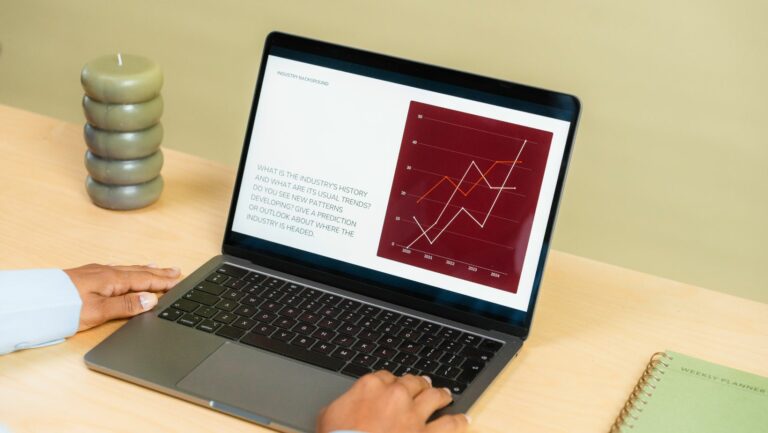In a world where fitness trackers and smartwatches are practically part of the wardrobe, wearable app development services have become the unsung heroes of tech. Imagine strapping on a device that not only counts your steps but also reminds you to breathe—because let’s be honest, we could all use a little nudge now and then. These apps are not just about keeping track of calories; they’re about enhancing lives, one notification at a time.
As businesses scramble to keep up with the latest trends, investing in wearable app development isn’t just a smart move—it’s essential. With the right app, companies can tap into a goldmine of data while offering users a seamless experience. So, whether you’re a startup or an established brand, diving into the world of wearables could be your ticket to staying ahead of the curve. Who knew tech could be this stylish and life-changing?
Wearable App Development Services
Wearable app development services focus on creating applications for devices like smartwatches, fitness bands, and health monitors. These apps offer functionalities that surpass traditional fitness tracking, including real-time health monitoring, notifications, and connectivity features. Companies increasingly seek these services to enhance user engagement and provide valuable insights into user behavior.
Innovative features enhance the usability of wearable apps. For example, heart rate monitoring and sleep tracking provide users with essential health data at their fingertips. Notifications for messages and reminders can significantly aid daily productivity and personal organization. Many users find this seamless integration into their everyday lives appealing, promoting continued usage and loyalty.
A wide range of industries benefits from wearable app development. Healthcare providers utilize these apps for patient monitoring and telemedicine, allowing for efficient care without face-to-face visits. Retailers use wearable technology for personalized shopping experiences, while employers implement wellness programs that leverage health data collected through wearables.
Emerging trends shape the future of wearable app development services. Integration of artificial intelligence enhances personalization, offering tailored health and fitness recommendations. Moreover, the Internet of Things plays a crucial role in linking wearables with other smart devices, creating a more interconnected user experience.
Investing in wearable app development services positions businesses competitively. By leveraging real-time data analytics, companies can refine their offerings and respond to consumer needs. Startups and established brands alike recognize the value wearable technology brings, driving innovation and maintaining relevance in a rapidly evolving market.
Key Features of Wearable Apps

Wearable apps provide numerous features that enhance usability and engagement for users. These features ensure a seamless experience tailored to individual needs.
User Experience Design
User experience design focuses on intuitive interfaces. Effective navigation allows users to access features quickly. Engaging visuals enhance understanding and interaction. Providing customizable settings enables users to personalize their experience. Compatibility across devices ensures seamless functionality, whether on a smartwatch or fitness tracker. Prioritizing simplicity in design makes apps more accessible to a broader audience. Emphasis on feedback mechanisms encourages user engagement and satisfaction.
Health and Fitness Tracking
Health and fitness tracking stands as a core feature of wearable apps. Monitoring heart rate in real time provides crucial health insights. Collecting data on activity levels helps users set and achieve fitness goals. Integration with step counters encourages daily movement, promoting a more active lifestyle. Offering reminders for hydration or exercise reinforces healthy habits. Sleep tracking features contribute to better overall well-being by analyzing sleep patterns. These functionalities help users maintain their health proactively, enhancing the app’s value and relevance.
Popular Platforms for Wearable App Development
Wearable app development thrives on several popular platforms. Each platform offers unique functionalities and benefits tailored to specific devices.
Android Wear
Android Wear is essential for wearable app development targeting Android devices. This platform supports a variety of smartwatches and fitness bands, allowing developers to create diverse applications. Features include real-time notifications, voice commands, and health metrics integration. Developers leverage Google Fit APIs to enhance health tracking capabilities, enabling users to monitor workouts and health data seamlessly. Notably, Android Wear’s integration with the Android ecosystem simplifies app deployment across multiple devices. Flexible customization options attract businesses aiming to enhance user engagement.
Apple WatchOS
Apple WatchOS stands out for its robust development environment for Apple devices. This platform supports numerous features, such as personalized notifications, health monitoring, and seamless connectivity with iOS devices. Developers can utilize HealthKit and WatchKit frameworks to create engaging applications that enhance user experiences. Functionality includes heart rate monitoring, activity tracking, and integration with third-party apps, making this platform versatile for various industries. The strong focus on user interface design aligns with Apple’s emphasis on aesthetics and usability. Businesses benefit from the immense market presence of Apple products, increasing their potential reach.
Benefits of Wearable App Development Services
Wearable app development services offer significant advantages for businesses and users alike. Enhanced functionality and features optimize user experiences, making these apps increasingly valuable.
Enhanced User Engagement
Enhanced user engagement stems from personalized interactions and features within wearable apps. Users benefit from customized notifications and alerts that keep them connected to important information. Gamification elements, such as challenges and rewards, motivate users to maintain their health and fitness goals. Data-driven insights help users monitor their progress, increasing motivation. Enhanced visual designs engage users, creating a satisfying interface. These factors contribute to higher retention rates, promoting continuous app usage and customer loyalty.
Real-Time Data Access
Real-time data access provides crucial insights for users and businesses. Wearable apps deliver live metrics on health parameters such as heart rate and activity levels, facilitating immediate feedback. Users can track their wellness in real time, allowing for timely adjustments to their routines. Businesses leverage this data to create tailored experiences and improve their services. Enhanced decision-making capabilities arise from rich, actionable insights, leading to better health outcomes for users. Real-time information fosters a proactive approach to health management, emphasizing the importance of these technologies in daily life.
Challenges in Wearable App Development
Wearable app development presents various challenges that developers and businesses must address to succeed in a competitive landscape.
Technical Limitations
Technical limitations significantly impact wearable app development. Developers encounter device constraints such as battery life, processing power, and storage capacity. These factors restrict the complexity of applications, necessitating prioritization of essential features. Connectivity issues between wearables and smartphones can hinder real-time data sync. Compatibility across multiple devices adds another layer of complexity, as different platforms may require tailored development approaches. Optimizing user experience while adhering to these limits proves crucial for delivering functional and engaging apps.
Market Competition
Market competition in wearable app development remains fierce. Numerous startups and established companies vie for consumer attention with innovative applications. Differentiating an app from similar offerings involves creating unique features and ensuring exceptional performance. Consumers expect regular updates and improvements, compelling developers to invest time and resources continuously. Brand loyalty plays a significant role in user retention, prompting businesses to prioritize user engagement strategies that enhance overall satisfaction. The rapid evolution of technology further intensifies competition as new trends and capabilities emerge, challenging businesses to stay relevant.
Conclusion
Embracing wearable app development services is essential for businesses aiming to thrive in today’s fast-paced tech landscape. These apps not only enhance user engagement but also provide valuable insights into health and fitness, promoting healthier lifestyles. As technology evolves, integrating AI and IoT will further personalize user experiences and drive innovation.
Investing in this sector enables companies to leverage real-time data analytics, ensuring they remain competitive and relevant. By focusing on intuitive design and seamless functionality, businesses can create applications that not only meet but exceed user expectations. The future of wearable technology is bright, and those who adapt will undoubtedly reap the rewards.




